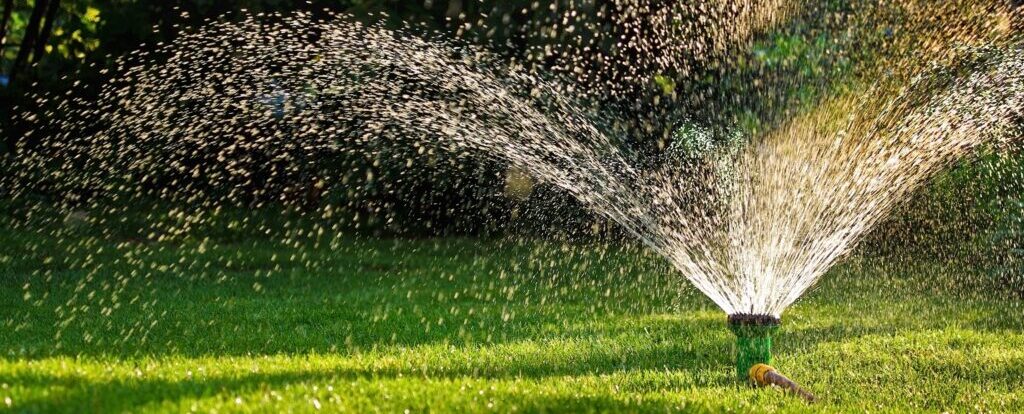Watering St. Augustine Grass: The Ultimate Guide
St. Augustine grass is a popular choice for homeowners and landscapers alike, thanks to its lush green color and ability to thrive in warm, humid climates. However, like any plant, it requires proper care and attention to maintain its beauty and health. One of the most important aspects of caring for St. Augustine grass is watering it properly. In this article, we’ll cover everything you need to know about watering St. Augustine grass, from how often to water it to the best time of day to do so.
Why Watering St. Augustine Grass is Important
Before we dive into the specifics of watering St. Augustine grass, let’s first discuss why it’s so important. Proper watering is essential for the health and growth of any plant, and St. Augustine grass is no exception. Water helps to transport nutrients throughout the plant, support photosynthesis, and maintain turgor pressure in the cells. Without enough water, St. Augustine grass can become stressed, turn yellow or brown, and even die.
How Often to Water St. Augustine Grass
The frequency of watering St. Augustine grass depends on a variety of factors, including the climate, soil type, and grass health. In general, St. Augustine grass requires about 1 inch of water per week, either from rainfall or irrigation. However, this amount may need to be adjusted depending on the weather conditions. During hot, dry weather, for example, St. Augustine grass may need to be watered more frequently to prevent drought stress.
Best Time of Day to Water St. Augustine Grass
The timing of watering St. Augustine grass can also have a significant impact on its health and growth. It’s generally best to water St. Augustine grass early in the morning, between 4 am and 10 am. This allows the grass to absorb the water before the heat of the day sets in, reducing the risk of evaporation. Watering in the evening can also be effective, but it can increase the risk of disease if the grass doesn’t have enough time to dry before nightfall.
How Much Water to Apply
In addition to the frequency and timing of watering, it’s also important to consider how much water to apply. Overwatering St. Augustine grass can lead to shallow root systems, disease, and even death, while underwatering can cause drought stress and brown patches. A good rule of thumb is to apply 1 inch of water per watering session, either through rainfall or irrigation. This can be measured using a rain gauge or by placing an empty tuna can in the watering zone and monitoring how long it takes to fill up with water.
Types of Irrigation for St. Augustine Grass
There are several types of irrigation systems that can be used to water St. Augustine grass, depending on the size and layout of the lawn. Some of the most common types include:
- Sprinkler systems: These are the most popular type of irrigation system and work by spraying water over the lawn in a circular pattern. They can be adjusted to water specific zones of the lawn and can be automated for convenience.
- Drip irrigation: This system delivers water directly to the roots of the plants through a network of tubes and emitters. It’s a more efficient way to water St. Augustine grass, as there’s less water lost to evaporation.
- Soaker hoses: These are similar to drip irrigation systems but are made of porous materials that allow water to seep out slowly. They’re best suited for small gardens or areas with plants in rows.
Signs of Overwatering and Underwatering St. Augustine Grass
Knowing the signs of overwatering and underwatering St. Augustine grass can help you adjust your watering schedule accordingly.
Signs of overwatering include:
- Mushy, spongy grass
- Fungal growth
- Yellowing or brown patches
- Puddles of water on the lawn
Signs of underwatering include:
- Wilting or drooping grass blades
- Brown, crunchy grass
- Dry, hard soil
- Footprints that remain visible on the grass
Conclusion
Watering St. Augustine grass properly is essential for maintaining its health and beauty. By following the guidelines outlined in this article, you can ensure that your St. Augustine grass receives the right amount of water at the right time. Remember to adjust your watering schedule based on weather conditions and keep an eye out for signs of overwatering or underwatering. With proper care, your St. Augustine grass can thrive and turn your landscape into a beautiful dreamscape.
FAQs
1. How often should I water St. Augustine grass during the summer?
During hot, dry weather, St. Augustine grass may need to be watered 2-3 times per week to prevent drought stress.
2. Is it better to water St. Augustine grass in the morning or evening?
It’s generally best to water St. Augustine grass early in the morning, between 4 am and 10 am.
3. Can I water St. Augustine grass with a hose?
Yes, you can water St. Augustine grass with a hose, but a sprinkler or drip irrigation system is more efficient for larger lawns.
4. How do I know if I’m overwatering or underwatering my St. Augustine grass?
Signs of overwatering include mushy, spongy grass, fungal growth, and yellowing or brown patches. Signs of underwatering include wilting or drooping grass blades, brown, crunchy grass, and dry, hard soil.
5. How do I measure how much water I’m applying to my St. Augustine grass?
You can measure how much water you’re applying by using a rain gauge or by placing an empty tuna can in the watering zone and monitoring how long it takes to fill up with water.
For comprehensive guidance on lawn care and landscaping, explore A1 Grass – your go-to destination for premium grass and top-quality landscape supplies.
- Bermuda Grass for High-Traffic Areas: Top Resilient Landscaping Solution for 2024
- ZeroScape Landscaping Designs: Crafting a Drought-Tolerant Garden
- Mastering Hardscape Installation in the Dallas-Fort Worth Area: Tips for Success
- Choosing the Perfect Hardscape Materials: A Guide to Enhancing Your Outdoor Space
- 5 Affordable Hardscape DIY ideas: Transform Your Outdoor Space without Breaking the Bank




